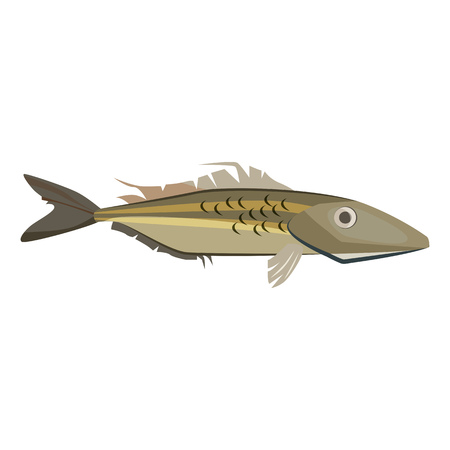Introduction to Marginal Magic
For generations, anglers in the UK have been captivated by the quiet magic found along the margins of our cherished lakes and canals. There’s something quintessentially British about setting up your tackle beside a reed-fringed swim, waiting in anticipation for the telltale signs of bream or tench moving through the shallows. These waters hold stories of misty dawns and time-honoured rituals, where patience and skill intertwine. Exploring the edges isn’t just about catching fish—it’s an immersion into a unique heritage, one that celebrates understated tactics and an intimate connection with classic British landscapes. As we delve into marginal fishing, we’re not only pursuing lively bream and elusive tench close to the bank, but also honouring a tradition that has long defined angling across Britain’s tranquil waters.
Understanding the Bank: Habitat and Fish Behaviour
If you’re looking to master the art of catching bream and tench close to the bank, it’s essential to first get to grips with their preferred environments and how they behave in British waters. The margins – those shallow, reed-fringed stretches right under your nose – are often overlooked, yet they offer a haven for these two iconic coarse fish species.
Marginal Environments: A Closer Look
The typical British lake or canal margin is a mosaic of vegetation, silt beds, sunken branches, and gentle shelves. These areas teem with natural food sources such as bloodworm, snails, insect larvae, and fallen detritus, making them irresistible to both bream and tench. The shelter provided by lily pads or overhanging willows also gives these shy species confidence to feed in daylight hours, especially during warmer months.
Why Bream and Tench Love the Margins
| Feature | Benefit for Fish |
|---|---|
| Dense Vegetation | Protection from predators; abundant natural food |
| Silty Bottoms | Ideal for rooting out worms and larvae |
| Shelving Banks | Gradual depth changes suit feeding patterns |
| Overhanging Trees/Reeds | Shelter and camouflage; less angling pressure |
Bream Behaviour by the Bank
Bream are renowned for their shoaling tendencies. They’ll often drift into the margins in numbers at dawn or dusk, searching for easy pickings amongst the debris. When water temperatures rise in late spring or early summer, you’ll spot tell-tale fizzing and bubbling as bream grub around the silt. Patience is key here – a quiet approach means you’re less likely to spook them as they move along the shelf.
Tench Tactics: Spotting Subtle Signs
Tench have a reputation as elusive ‘old warriors’, preferring weedy corners and shaded pockets. Early mornings and late evenings see them patrol close to the bank, with small patches of pinprick bubbles betraying their presence as they forage methodically through mud and plant roots. Unlike bream, tench tend to be solitary or in small groups, so precision casting near visible features often pays dividends.
Seasonal Shifts in Marginal Activity
| Season | Bream Activity | Tench Activity |
|---|---|---|
| Spring | Move into shallows to spawn; active at margins during warm spells | Start feeding after winter lull; favour warm, weedy edges |
| Summer | Shoal up tightly; feed aggressively early/late in day close to bank | Peak activity; patrol margins throughout dawn and dusk periods |
| Autumn/Winter | Largely retreat to deeper water but can still visit margins on mild days | Activity slows; occasional margin visits during sunny spells or mild fronts |
By reading these subtle clues in habitat and behaviour, you’ll be well on your way to enjoying classic British bank-side angling – where patience and observation combine with local know-how for memorable sessions targeting bream and tench in their marginal haunts.

3. Essential Tackle for Close-Quarter Angling
When it comes to margin fishing for bream and tench, local anglers know that the right tackle can make all the difference. In true British style, keeping things simple yet effective is key—no need for flashy kit when a time-tested setup will do the trick. Here’s a look at the must-have gear for working those reed-fringed edges and lily-strewn margins with confidence.
Rods: Short, Sturdy, and Sensitive
The rod of choice for many seasoned margin anglers is a 10 to 12-foot specimen or float rod. A shorter rod allows for greater manoeuvrability along overgrown banks and under low-hanging branches. Look for one with a soft tip to detect those subtle bites from wary tench, yet enough backbone to steer a chunky bream away from snags.
Reels: Reliable and Responsive
Pair your rod with a small fixed-spool reel or, if you’re feeling traditional, a centrepin reel for ultimate control and direct contact. Spool up with six to eight-pound line—strong enough to handle hard-fighting fish in snaggy swims but still fine enough not to spook them.
Lines and Rigs: Balanced for Success
For close-in work, mainlines in the 6-8lb range are ideal, matched with hooklengths slightly lighter if needed. Float rigs are king for visual sport, with insert wagglers or delicate pole floats being top picks. For ledgering, opt for small feeders or leads—nothing too heavy as you want your bait to settle naturally on the lakebed.
Baits: Local Favourites That Never Fail
No list of essentials would be complete without baits. Sweetcorn is a classic go-to for both species—its bright colour and sweet aroma are irresistible in the margins. Worms, particularly dendrobaenas, are another staple, wriggling temptingly near cover. Don’t overlook bread flake or maggots either; these humble offerings often outwit even the most cautious fish. Pre-baiting lightly with groundbait laced with hemp or micro pellets can give you an edge during those quiet spells.
With this quintessential kit in tow, you’ll be well-prepared to embrace the gentle art of margin angling—a cherished part of British coarse fishing culture that’s all about patience, skill, and soaking up the peace and quiet by the water’s edge.
4. Top Tactics for Bream and Tench
When it comes to outwitting bream and tench close to the bank, seasoned British anglers rely on a toolkit of classic tactics refined through decades of riverside experience. This section unpacks the most effective approaches, blending traditional methods with subtle refinements that often spell the difference between a blank day and a memorable session.
Float Fishing: The Gentlemans Approach
Nothing quite matches the charm of float fishing in the margins. Using a well-balanced waggler or pole float allows for delicate bait presentation, crucial when targeting shy-feeding bream and tench. Opt for sensitive floats set just right above the lakebed, and keep your shotting pattern as discreet as possible. Pairing this with light lines (around 3-5lb) ensures minimal disturbance—essential for those glassy dawns when fish patrol inches from the reeds.
Recommended Float Fishing Set-Up
| Component | Preferred Choice | Why? |
|---|---|---|
| Main Line | 3-5lb Mono | Stealthy, manageable, low visibility |
| Float Type | Slim Waggler/Pole Float | Sensitive bite indication, easy to spot in low light |
| Hook Size | 14–18 Barbless | Perfect for maggots or sweetcorn without spooking fish |
| Bait | Maggot, Sweetcorn, Caster | Classic tench & bream favourites, easily available at UK tackle shops |
The Feeder Method: Consistency is Key
If you fancy something with a bit more backbone, feeder fishing along the margins can yield outstanding results. By using an open-end or method feeder packed with groundbait laced with sweetcorn or chopped worm, you draw fish to your swim and hold them there. Remember: accuracy trumps distance every time when working close to the bank—so keep those casts tight and consistent.
Feeder Tips for Marginal Magic:
- Use short hooklengths: Around 4-6 inches lets bait settle enticingly near the feeder.
- Add micro pellets or hemp: Irresistible to both species and keeps fish rooting around longer.
- Regular topping up: Don’t let your swim go cold—little and often is the mantra on British waters.
The Art of Bait Presentation
A subtle approach often pays dividends. Bream and tench are notorious for their cautious feeding habits—especially in clear, pressured venues. Hair-rigging a single grain of sweetcorn or double maggot can present your bait naturally while reducing tangles. Try burying your hook in a small ball of groundbait (‘the tip-off’ trick popular on many English club waters) for extra appeal.
Bait Presentation Quick Guide:
| Bait Type | Best Presentation Technique |
|---|---|
| Maggot/Caster | Bunched on fine-wire hook; try alternating colours (red/white) |
| Sweetcorn | Single grain hair-rigged; sometimes tipped with artificial corn for visual boost |
| Dendrobaena Worms | Tipped on size 16 hook; tail end trailing for movement in water |
| Pellets/Micro Pellets | Pushed into method feeder; use banded pellet on short hair rig nearby feeder for best effect |
Mastering these top tactics will see you well-equipped for success along any British margin—whether you’re after slab-sided bream at a sleepy estate lake or golden-tenched glory at your local club water.
5. Best Times and Weather for Marginal Success
If you’re after bream and tench right in the margins, timing is everything—just as any British angler worth their flask of tea will tell you. Marginal areas come alive at particular moments, and understanding our famously fickle UK weather is key to unlocking their magic.
The Rhythm of the British Seasons
Spring and early summer are prime for margin fishing. As temperatures rise, both bream and tench drift into the shallows, rooting about for natural grub among the emerging weed beds. Late April through June is your golden window—those fresh mornings and balmy evenings see fish cruising close, especially after a mild spell has warmed the water’s edge.
Dawn Patrols and Dusk Delights
Early mornings and late evenings tend to be most productive around the margins. At first light, before the banks get busy with dog walkers or boaters, fish move in to feed confidently. Likewise, as dusk settles and shadows stretch across the water, both species venture back towards the shallows, making these twilight hours magical for bites.
Weather Wisdom Only Locals Know
Ask any seasoned Brit: overcast days with a gentle breeze ruffling the surface are perfect. Bright sunshine can push wary fish further out, but a bit of drizzle or that classic English mizzle? That’s often when tench and bream feed hardest along the edges. Just after a summer shower, look for stirred-up margins—feeding activity can go through the roof as insects and worms wash in.
Finally, keep an eye on pressure changes. A falling barometer ahead of rain is a green light; fish sense it’s time to feed up before unsettled conditions set in. In short, don’t curse our ever-changing weather—embrace it! There’s real charm (and reward) in learning its subtle cues along your favourite swim.
6. Etiquette and Relaxation on the Bank
There’s an unspoken charm to angling along the margins, not just in the pursuit of bream and tench, but in embracing the timeless etiquette that lines British waters. When you settle down on a grassy bank beside a slow-moving river or peaceful lake, remember you’re sharing this tranquil haven with fellow anglers, walkers, and wildlife alike. Respect for others is paramount—keep your tackle tidy, avoid encroaching on neighbouring swims, and greet passers-by with a friendly nod or quiet “morning.”
Sharing space is part of the riverside ritual. If someone’s already fishing a promising swim close by, move along rather than crowding in; there’s always another reed-fringed nook just waiting for your float. When casting or landing fish, be mindful of overhanging trees, nesting birds, and any canine companions splashing nearby.
But it isn’t all about rules—it’s about relaxation too. Take time to savour the gentle hum of bees in the wildflowers and the rustle of reeds in a summer breeze. A Thermos of tea and a sturdy camping chair are essential kit for soaking up the soothing rhythms of the British countryside. Whether you’re waiting for that tell-tale lift bite or simply watching clouds drift across the sky, let yourself unwind completely.
Angling at the margins is as much about tuning into nature as it is about tactics. Allow yourself to become part of this peaceful landscape, respecting its traditions and inhabitants while enjoying a restorative escape from everyday bustle.
7. Superb Spots: Noteworthy British Venues
When it comes to enjoying the gentle art of marginal fishing for bream and tench, Britain is simply blessed with an abundance of classic venues. From tranquil estate lakes to bustling club waters, the UK is home to some truly iconic spots where these species flourish and anglers gather for a relaxed day by the water’s edge. Let’s explore a selection of cherished venues that capture the spirit of British coarse fishing.
Lakes Steeped in Tradition
The legendary Redmire Pool in Herefordshire is not just famous for carp; its lush margins also harbour some impressive tench and bream. Likewise, Walthamstow Reservoirs in North London offer urban anglers plentiful opportunities, with margins brimming with life and plenty of double-figure slabs for those who persevere.
Community Favourites
Clubs up and down the country pride themselves on well-maintained venues such as Boddington Reservoir in Northamptonshire, renowned for its shoals of bream patrolling close to the reeds. Meanwhile, Earlswood Lakes near Birmingham are beloved by locals for their easy access and reliable tench sport in the quieter bays.
Hidden Gems Off the Beaten Track
If you fancy a spot away from the crowds, consider exploring lesser-known stretches like the Kennet & Avon Canal, where old wharves and lily-fringed banks offer superb marginal swims. For those seeking a truly peaceful escape, secluded estate ponds across Norfolk and Suffolk promise classic English scenery and rewarding fishing.
A Day Out, The British Way
Whichever venue you choose, the joy of marginal magic lies in soaking up the atmosphere—perhaps sharing a flask of tea with a mate or nodding to a passing dog walker. These venues aren’t just places to fish; they’re cornerstones of local angling culture, where time slows down and every bite feels special. So pack your tackle, grab your landing net, and discover why British waters are second to none for bream and tench close to the bank.


